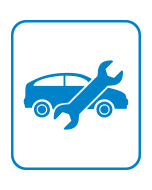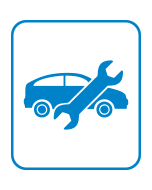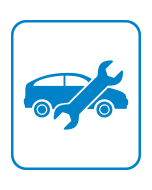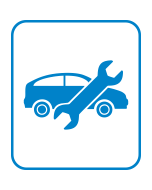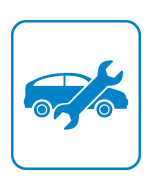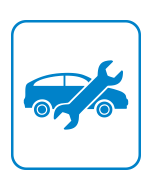Mobility and Other Downstream Services Market, Forecast to 2030
Mobility and Other Downstream Services Market, Forecast to 2030
OEM and Service Provider Revenue from Downstream Services will Exceed $3 Trillion by 2030
04-Sep-2018
North America
$4,950.00
Special Price $3,712.50 save 25 %
Description
Digital disruption is set to revolutionize the automotive industry. The value is shifting from individual consumption to collaborative consumption. OEMs are embracing this trend and are looking at alternative sources of revenue, such as shared mobility, connected car services, financial services, and logistics services.
The demand for shared mobility services, such as carsharing, ridehailing and dynamic shuttle, is increasing, with these services expanding globally. OEMs are launching their own mobility services, partnering with mobility start-ups that are providing these services and are also launching their own mobility sub-brands under which all mobility-related projects will be unified.
Frost & Sullivan observed increasing efforts from OEMS, Tier I suppliers and startups to enter the car data monetization space through various verticals, such as developing new apps, hardware/interfaces (smartphone pairing), and offering services related to the type of data collected. OEMs are partnering with technology companies to share data (only with customer consent) to recommended third-party service providers, such as insurance companies and smart parking service providers. Tier I companies are investing in start-ups that focus on data-driven platforms, AI, and ML to leverage IoT applications.
Automotive manufacturers will continue to focus on Connected, Autonomous, Shared and Electric (CASE) strategies. Autonomous technologies will have a big impact on shared mobility and logistics. Drone technology has already emerged as an active R&D area in the broader automotive industry. There is also interest in aftermarket commercial applications, where a drone interacts with the vehicle to sense the environment and carries replenishment parts to specified locations in the warehouse once a lack of inventory has been confirmed. In the shared mobility space, autonomous technology can render huge cost savings to the end consumer.
Key Features
The aim of this study is to analyze the global market potential for these downstream automotive services. The analysis is based on the various markets listed in the introductory section of the study.
The main objectives of the study are:
- To obtain a clear and detailed view of all 24 markets.
- To enable comparative analysis of the market size and potential across the different markets.
- To estimate the market potential between 2017 and 2030.
- To understand the various trends that are driving the various markets.
- To understand the impact of autonomous technologies on the various markets.
- To estimate the market potential for MaaS providers.
- To enable comparative analysis of the market size and potential across the different regions specified in the scope section of the study.
Table of Contents
Key Findings
Potential Automotive Downstream Services
Revenue from the 4 Main Automotive Downstream Clusters
Revenue from the Automotive Downstream Markets
Potential from the Mobility-as-a-Service Market
Market Potential from Penetration of Autonomous Technologies
Revenue Comparison of Top 15 Markets—Europe, 2017
Revenue Comparison of Top 15 Markets—Europe, 2030
Revenue Comparison of Top 15 Markets—NA, 2017
Revenue Comparison of Top 15 Markets—NA, 2030
Revenue Comparison of Top 13 Markets—LATAM, 2017
Revenue Comparison of Top 15 Markets—LATAM, 2030
Revenue Comparison of Top 10 Markets—Africa, 2017
Revenue Comparison of Top 15 Markets—Africa, 2030
Revenue Comparison of Top 13 Markets—ASEAN, 2017
Revenue Comparison of Top 15 Markets—ASEAN, 2030
Revenue Comparison of Top 14 Markets—China, 2017
Revenue Comparison of Top 15 Markets—China, 2030
Revenue Comparison of Top 14 Markets—ROW, 2017
Revenue Comparison of Top 15 Markets—ROW, 2030
Key Findings and Future Outlook
Key Findings and Future Outlook (continued)
Key Findings and Future Outlook (continued)
Key Findings and Future Outlook (continued)
Research Scope
Research Scope (continued)
Research Aims and Objectives
Key Questions this Study will Answer
Research Background
Research Methodology
Automotive Downstream Services Segmentation
Revenue from the 4 Main Automotive Downstream Clusters
Revenue from the Connected Mobility Cluster
Revenue from the Connected Data Cluster
Revenue from the Connected Vehicle Cluster
Revenue from the Connected Logistics Cluster
Traditional Carsharing
Global Traditional Carsharing Market Size
Global Traditional Carsharing Fleet Size
P2P Carsharing
Global P2P Carsharing Market Size
P2P Carsharing Fleet Size
Corporate Carsharing
Corporate Carsharing Market Size
Corporate Carsharing Fleet Size
Common Taxi Business Models
Global Common Taxi Market Size
Common Taxi Fleet Size in Million
Last-Mile Mobility
Global Last-Mile Mobility Market Size
Last-Mile Mobility Fleet Size
Dynamic Shuttle
Global Dynamic Shuttle Market Size
Dynamic Shuttle Fleet Size
Mobility-as-a-Service
Global MaaS Market Size
Car Leasing and Rental
Global Car Leasing Market Size—Private Leasing
Global Car Leasing Market Size—Corporate Leasing
Global Car Rental Market Size
Car Rental Fleet Size
Autonomous Shuttle
Global Autonomous Shuttle Market Size
Autonomous Taxi
Global Autonomous Taxi Market Size
3D Taxi
Global 3D Taxi Market Size
3D Taxi Vehicles in Operation
Car-related Services
Global Car-related Services Market Size
Car-related Monitoring Services
Global Car-related Monitoring Services Market Size
Infotainment and Assistance
Global Infotainment and Assistance Market Size
Passenger Health and Safety Services
Global Passenger Health and Safety Services Market Size
Fleet Owner Services
Global Fleet Owner Services Market Size—LCV
Small-to-midsize Logistics
Global 3D Small-to-midsize Logistics Market Size
Global Autonomous Small-to-midsize Logistics Market Size
Global Common Small-to-midsize Logistics Market Size
Smart City
Global Smart City ITS Market Size
Global Smart City Parking Market Size
Global Smart City Charging Infrastructure Market Size
Third-party Data Brokerage
Global Third-Party Data Brokerage Market Size
Lead Generation
Global Lead Generation Market Size
Growth Opportunity—Mobility and Other Potential Downstreams
Strategic Imperatives for Success and Growth
Key Conclusions and Future Outlook
The Last Word—3 Big Predictions
Legal Disclaimer
Key Abbreviations
List of Exhibits
List of Exhibits (continued)
List of Exhibits (continued)
List of Exhibits (continued)
List of Exhibits (continued)
List of Exhibits (continued)
Popular Topics
plastic waste management market
biometric authentication market
Key Features
| No Index | No |
|---|---|
| Podcast | No |
| Author | Ankita Mukherji |
| Industries | Automotive |
| WIP Number | MDBA-01-00-00-00 |
| Is Prebook | No |
| GPS Codes | 9673-A6,9674-A6,9694,9800-A6,9807-A6,9813-A6,9882-A6,9965-A6,9968-A6,9969-A6,9A57-A6,9A70-A6,9AF6-A6,9B01-A6,9B02-A6,9B13-A6 |
 USD
USD GBP
GBP CNY
CNY EUR
EUR INR
INR JPY
JPY MYR
MYR ZAR
ZAR KRW
KRW THB
THB